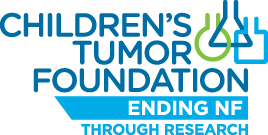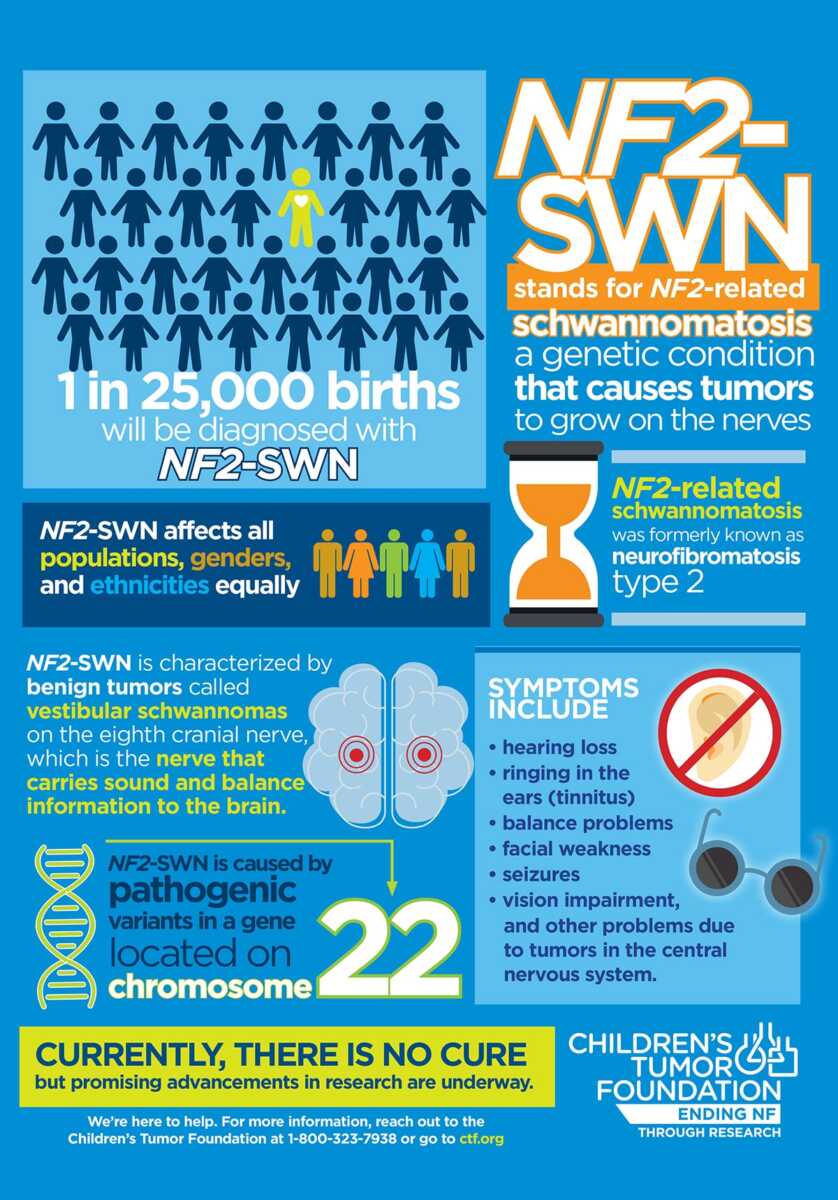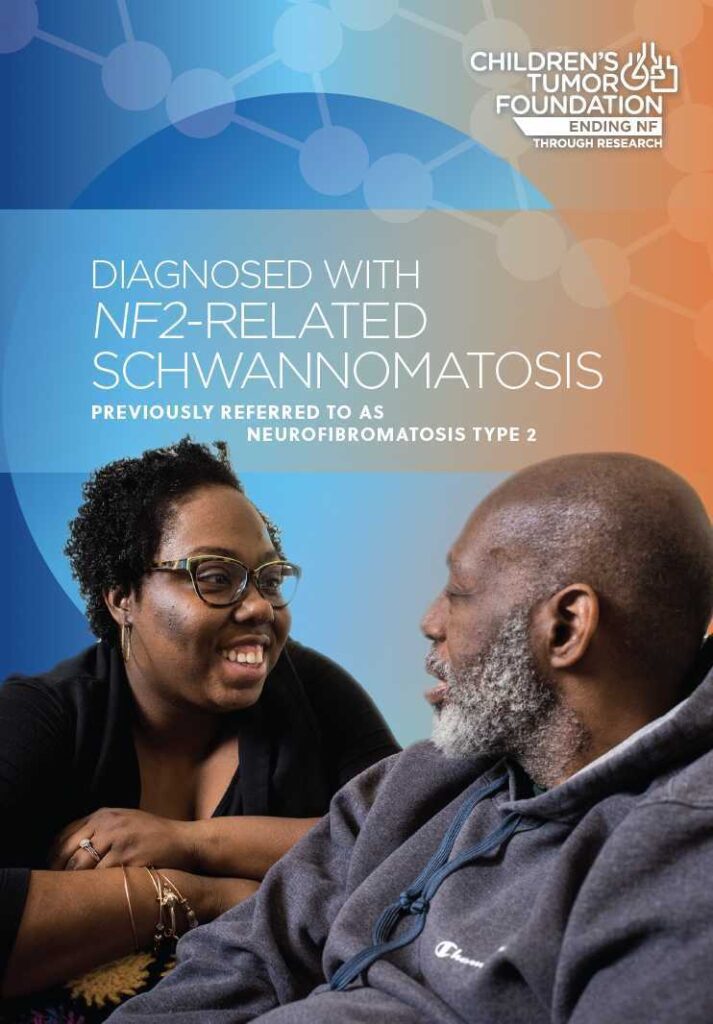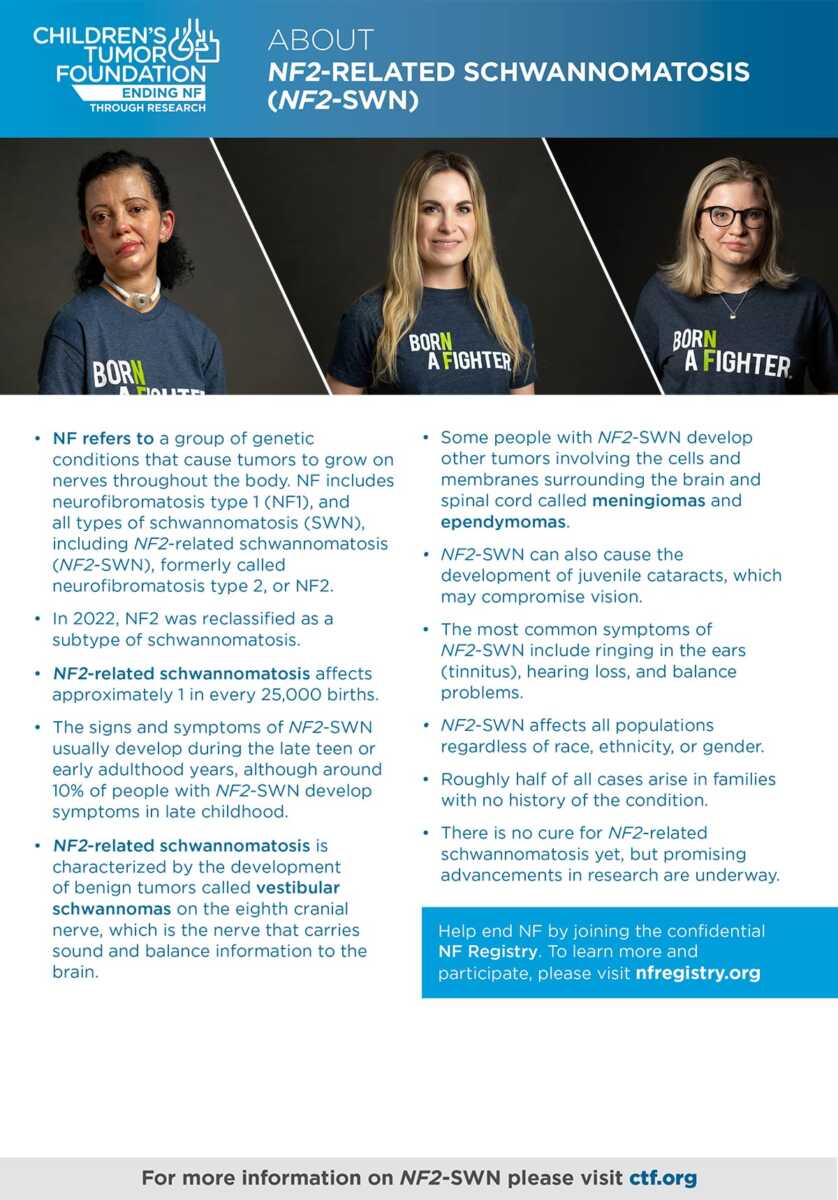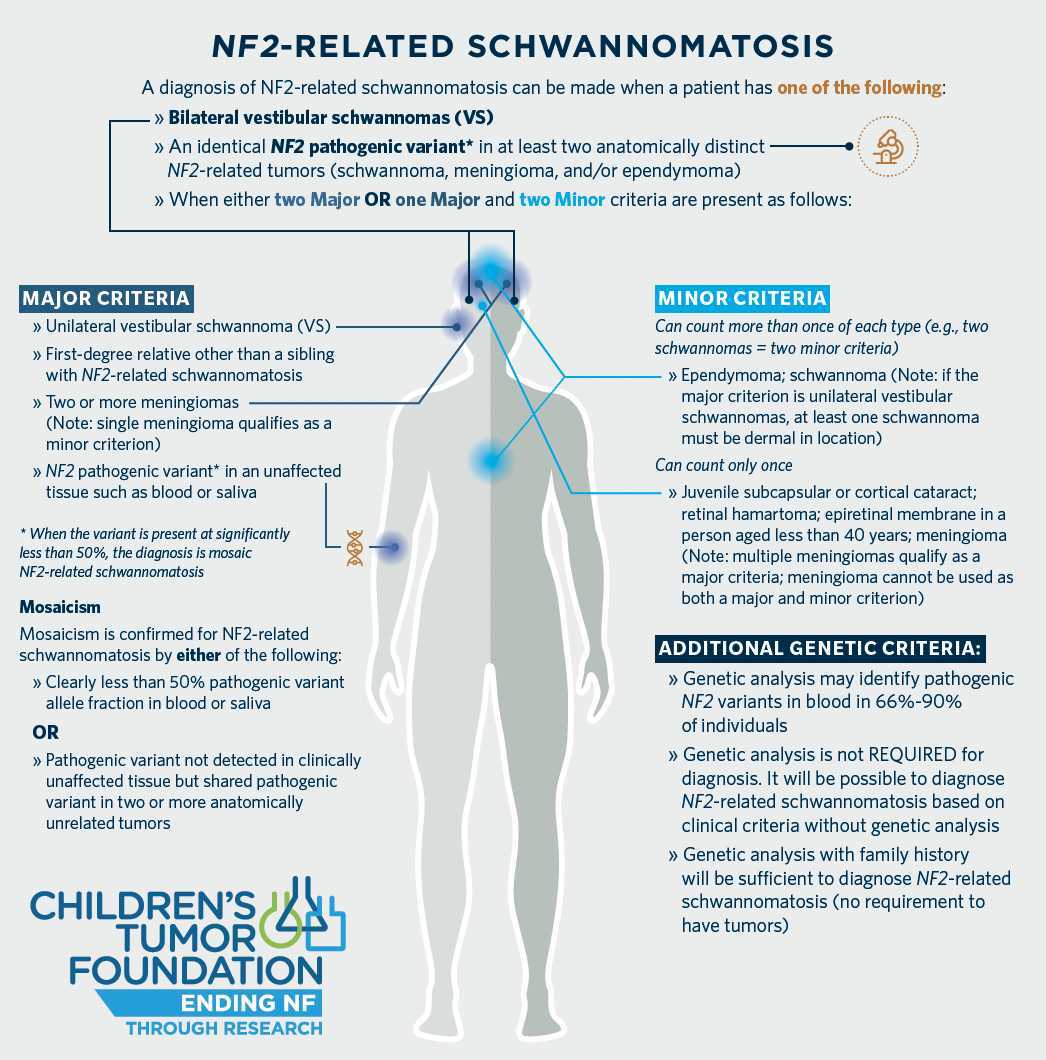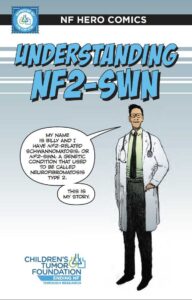Learn more about NF2-related schwannomatosis (NF2-SWN), formerly called neurofibromatosis type 2.

Newly Diagnosed or Waiting for a Diagnosis?
Getting an NF diagnosis, or waiting for a diagnosis, can be overwhelming. The most important thing to remember is that you are not alone. We suggest starting your journey with these resources.
What is NF2-related schwannomatosis?
NF refers to a group of genetic conditions that cause tumors to grow on nerves throughout the body. The types of NF include neurofibromatosis type 1 (NF1), and all types of schwannomatosis (SWN), including NF2-related schwannomatosis (NF2-SWN), formerly called neurofibromatosis type 2, or NF2.
NF2-related schwannomatosis is much less common than NF1, affecting about 1 in 25,000 people worldwide. The condition is characterized by the development of benign tumors, called vestibular schwannomas (formerly called acoustic neuromas), on the nerve that carries sound and balance information from the inner ear to the brain (the eighth cranial nerve). These tumors affect both ears, often leading to partial or complete hearing loss.
People with NF2-SWN may also develop other types of benign brain or spinal tumors. The condition can also cause the development of cataracts or other eye findings, potentially compromising vision. Most people develop symptoms in the late teen and early adult years, although about 10% of people develop symptoms during late childhood.
For information on the genetics of NF, CLICK HERE.
NF2-SWN Resources
Click to view, download, or print our NF2-SWN brochures and fact sheets. Additional languages may be found in our Resource Library.
What are some common signs of NF2-SWN?
The most common first symptoms in NF2-related schwannomatosis, or NF2-SWN, are hearing and balance problems. These symptoms are due to benign tumors on the nerves leading to the ears. Individuals with NF2-SWN may experience some, but not all, of the following:
- Ringing in the ears (tinnitus)
- Hearing loss
- Problems with balance
- Facial weakness
- Brain and cranial nerve damage
- Swallowing difficulties
- Seizures
- Vision loss
- Loss of balance and mobility due to tumors of the spine, foot drop, pain, muscle wasting, or other nerve damage.
How is NF2-SWN diagnosed?
Healthcare providers use a list of diagnostic criteria (a checklist of signs and symptoms) to determine whether or not a patient may be diagnosed with a disorder or disease. A doctor will have to ask the patient many questions and give the individual’s body a thorough examination to determine whether the criteria is met. Often, a patient will be asked to have genetic testing using a blood or saliva sample, or to have all or part of a tumor removed so that it can be viewed under a microscope.
While the diagnostic criteria in the infographic to the right were developed for healthcare providers, it may help enhance your understanding of the diagnostic procedures for NF2-SWN and in your discussions with clinicians about your own individual diagnosis.
A diagnosis of NF2-related schwannomatosis can be made when a patient has one of the following:
- Bilateral vestibular schwannomas (tumors on the hearing nerves of both ears)
- An identical NF2 pathogenic variant* in at least two separate NF2-related tumors (including schwannoma, meningioma, and/or ependymoma)
- Either two Major OR one Major and two Minor criteria – as indicated in the infographic to the right.
How is a diagnosis determined?
Once someone has been diagnosed with NF2-SWN, several tests may help define the nature and progression of the disorder. These tests include the MRI (magnetic resonance imaging) scan and an audiometry, or hearing test. Oftentimes, an ophthalmological (eye) exam is recommended. Genetic testing can be done, which is a personal choice. It can be used to establish or confirm a diagnosis of NF2-SWN when the situation is uncertain. A genetics healthcare provider or genetic counselor can help you make this decision.
Because pain is often the main and presenting symptom, it may take several years before schwannomatosis is diagnosed and the source of the pain is identified. The degree of pain and tumors vary widely and some symptoms of schwannomatosis are shared with other conditions.
Healthcare providers use a list of diagnostic criteria (a checklist of signs and symptoms) to determine whether or not a patient may be given a diagnosis of a disorder or disease. A doctor will have to ask the patient many questions and thoroughly examine the individual’s body to determine whether the criteria is met. Often, a patient will be asked to have genetic testing using a blood or saliva sample, or to have all or part of a tumor removed so that it can be viewed under a microscope.
The diagnostic criteria in this summary were developed for healthcare providers, and it may be helpful in enhancing your understanding of the diagnostic procedures for SWN and in your discussions with clinicians about your own individual diagnosis.
Are there treatments for NF2-SWN?
There is currently no cure for NF2-related schwannomatosis. However, promising research and clinical trials are underway testing drugs that may be effective in shrinking NF2-SWN tumors and effectively managing symptoms.
Because NF2-SWN involves many different systems of the body, doctors and staff from many different specialties may be involved in caring for people with NF2-SWN. An NF clinic is the facility most likely to offer the full range of necessary services. You can find a list of NF specialty clinics at ctf.org/doctor. Look particularly for facilities that specialize in NF2-SWN, which means that they see many patients with this condition.
Many NF clinics offer coordinated care, so members of the specialist team are in regular communication with one another and it may be possible for several team members to see you on the same visit.
If you do not have access to a specialty NF2-SWN clinic, you may need to consult specialists one at a time. It is important to see providers who know about NF2-SWN. Your doctor may refer you to healthcare professionals who are experts in different NF2-related issues.
In the course of treatment, a person with NF2-SWN might seek out care from a number of specialists:
- Neurology – treats conditions affecting the brain and spine.
- Otolaryngology (ENT) – for ear, nose, throat, and vestibular (inner-ear balance) systems.
- Ophthalmology – eyes and vision.
- Neuro-ophthalmology – visual problems related to the nervous system.
- Oncology – benign and malignant tumors.
- Pediatric medicine -for children and adolescents.
- Genetics – how genes affect a medical condition
- Neurosurgeons – surgical options for the brain and spinal cord
Stories of NF2-SWN
Remember that you are not your diagnosis. Yes, it is a major aspect of your life, but you are a unique individual with talents, skills, personal strengths, and resources—even if there are many challenges to living with NF2-SWN. The world can be a better place because of you in so many ways. Meeting others who share your diagnosis or reading their unique stories, can offer insight and bring comfort along your journey with NF2-SWN.
MORE STORIES OF NF2-SWN
